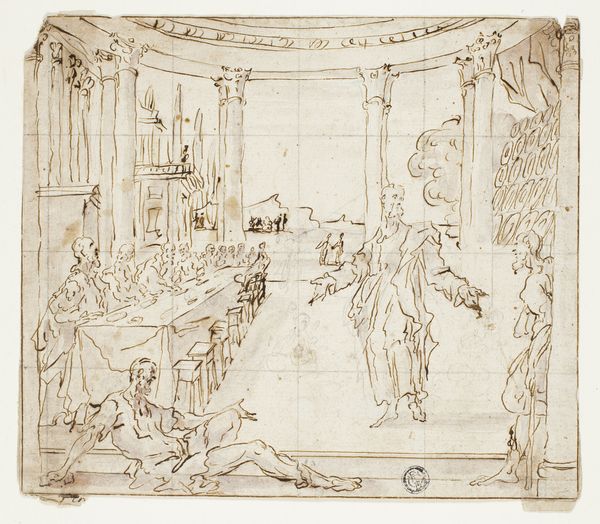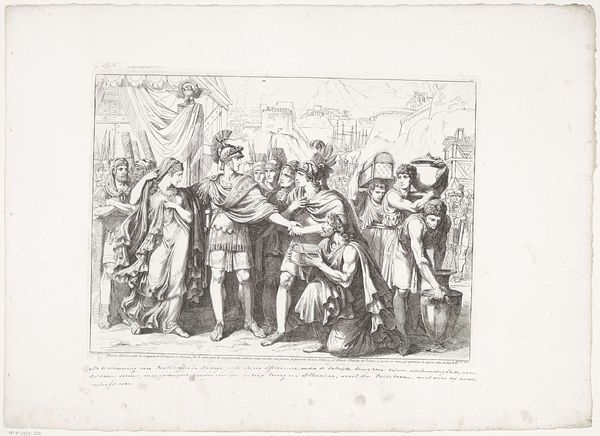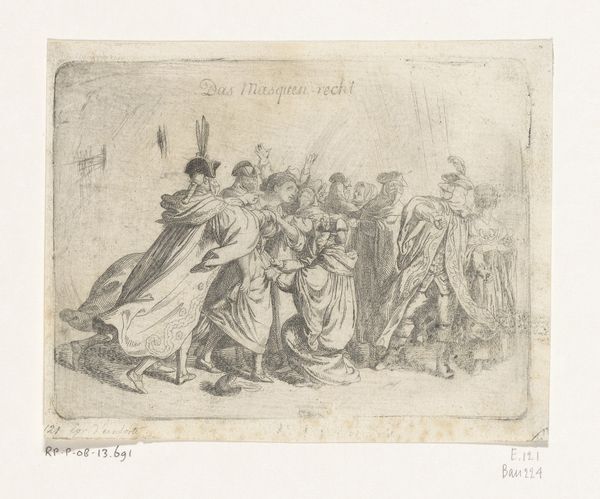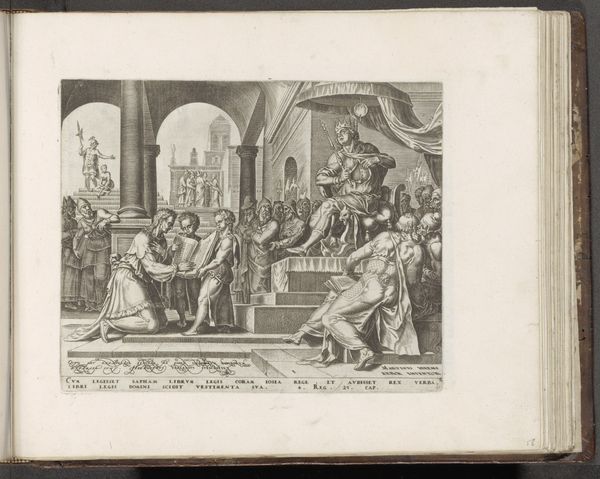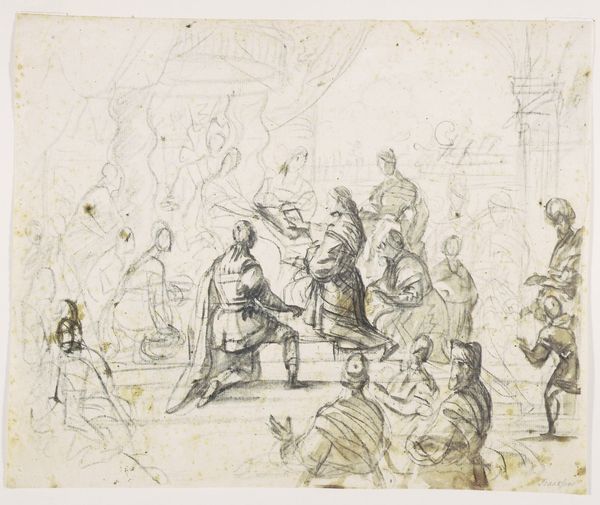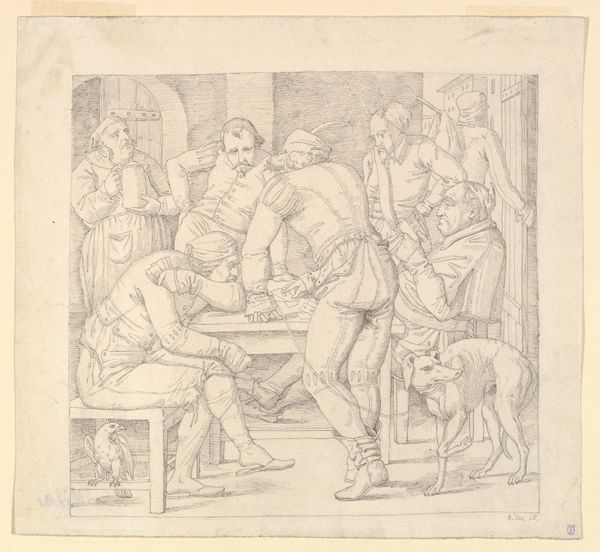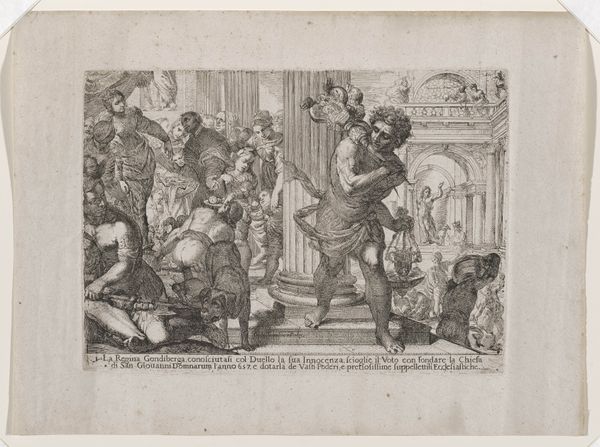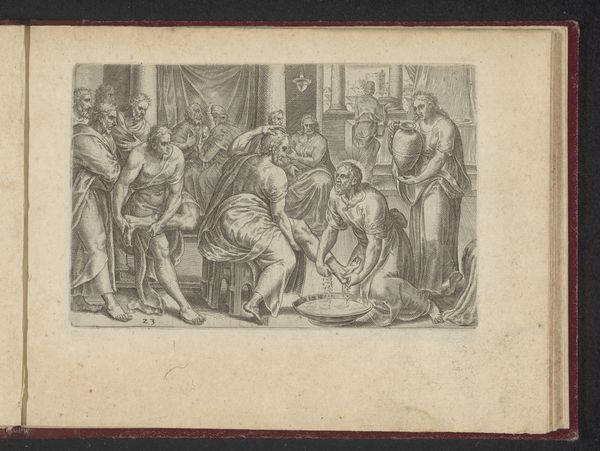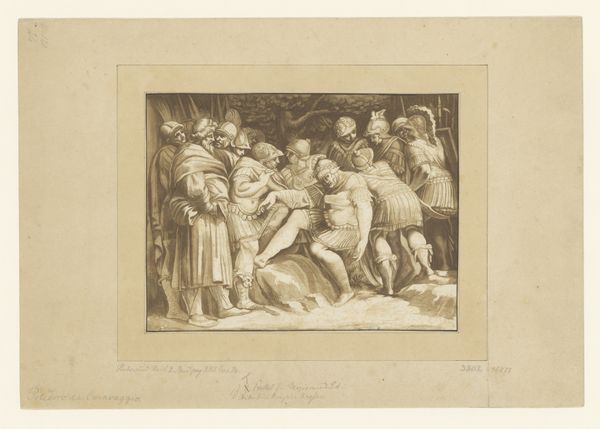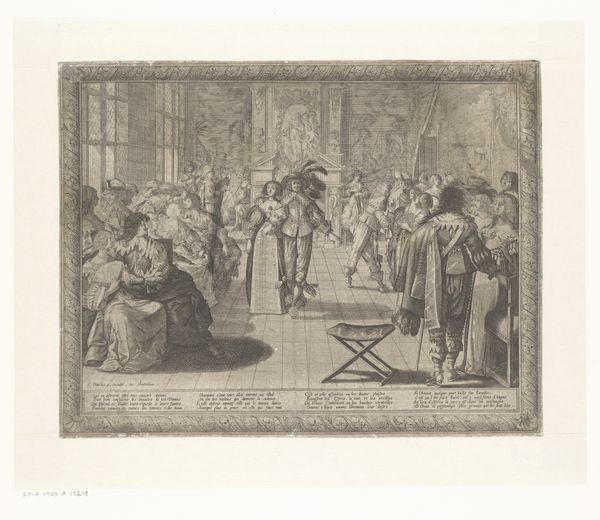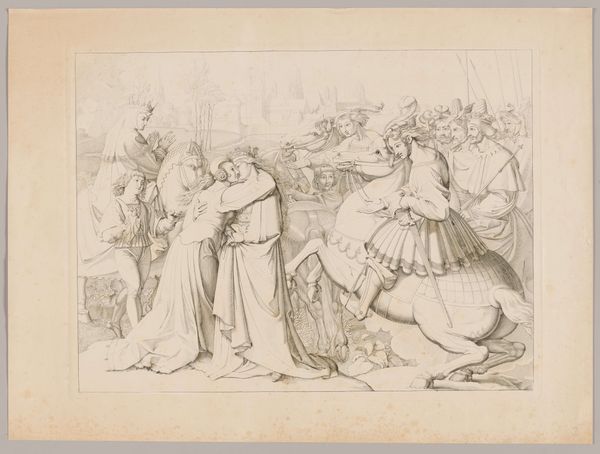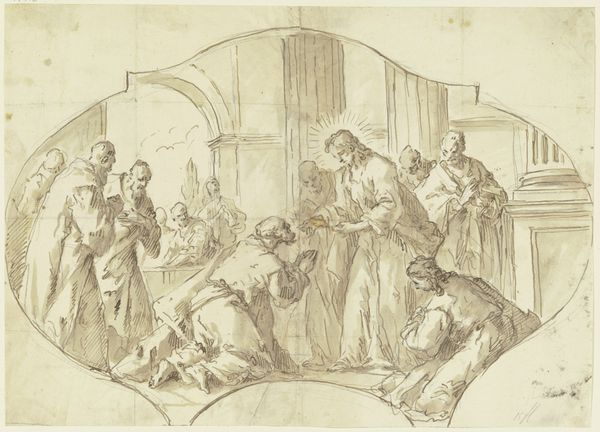
Spotprent op Lodewijk XIV en de vervolging van de protestanten in Frankrijk, 1689 1689
0:00
0:00
romeyndehooghe
Rijksmuseum
drawing, print, etching, paper, ink
#
drawing
#
narrative-art
#
baroque
# print
#
etching
#
paper
#
ink
#
genre-painting
#
history-painting
Dimensions: height 334 mm, width 373 mm
Copyright: Rijks Museum: Open Domain
Curator: Looking at this, the first thing that strikes me is its density; a mass of figures caught in what appears to be a moment of intense drama. It feels like witnessing a stage play frozen in time. Editor: Indeed. What we have here is a satirical print by Romeyn de Hooghe, made in 1689. Its full title translates to "Satirical Print on Louis XIV and the Persecution of Protestants in France." De Hooghe was a master of etching, and this piece, rendered in ink on paper, is a potent example of how printmaking served as a vehicle for political commentary. Curator: So it’s agitprop, essentially. The frenetic energy, the exaggerated expressions... there's almost a caricatured quality to it. A dog barking furiously is such a perfect detail. Is it an inside scene contrasting sharply to the outdoors seen through the opening? Editor: Precisely. It depicts Louis XIV, characterized by the paper held like binoculars, observing the forced expulsion of Protestants from France. We see figures being accosted indoors as many leave towards the outside depicted behind Louis. It’s a powerful visual indictment of religious persecution and absolutist rule, reflecting the political climate of the period. Note also the Dutch flags in the left side corner indicating this event is viewed through the lense of Dutch protestant identity. Curator: What strikes me too is how effectively de Hooghe employs line and tone. He wrings emotion with sparse washes, mostly thin strokes but some darker pools as well, evoking all these dramatic effects. It really goes to show you, something about the capabilities embedded in so-called low art forms like prints, not just "high" paintings, for political intervention and impact. Editor: Absolutely. The relatively easy reproduction process of prints and etchings was vital. Consider the economic implications – a much broader audience could engage with this message compared to an oil painting. And as the subject clearly showcases, these materials and methods contributed directly to shaping public discourse during a tumultuous period. De Hooghe really exploited the possibilities of mass media in its early days. Curator: It gives a whole new meaning to 'speaking truth to power,' doesn’t it? Through the medium of ink, Romeyn de Hooghe offers not just a historical document, but a raw emotional plea against oppression. I’m grateful it continues to speak, however loudly. Editor: Indeed. It invites us to reconsider the relationship between artistic production, political action, and the materials that connect them across time. It demonstrates how material processes serve vital historical, political functions.
Comments
No comments
Be the first to comment and join the conversation on the ultimate creative platform.
